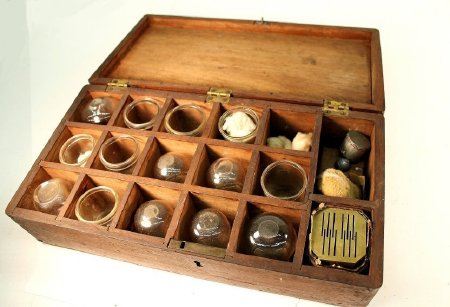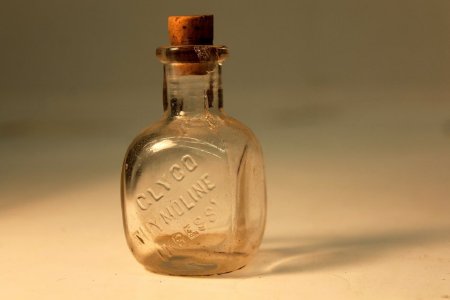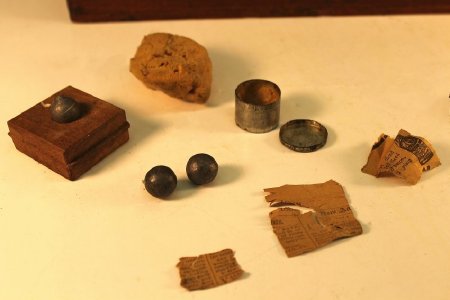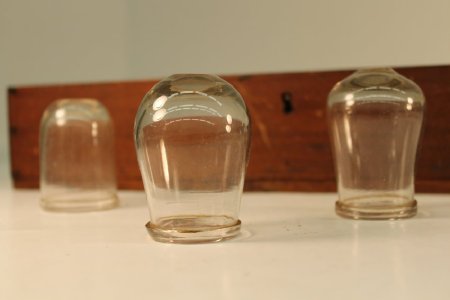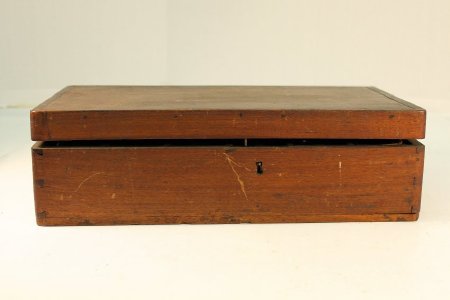Object ID Number:
eh10 r27
Object Name:
scarificator
Date of Manufacture:
/ /
Manufactured from:
1810
Manufactured to:
1900
Description / History:
Large wooden bloodletting kit containing 13 blown glass cups, one brass scarificator in a black leather case, one glyco–thymoline glass bottle, one sponge, multiple pieces of lambs' wool and metalic pieces, a small tin container full of some sort of balm, and a series of newspaper clippings.
Bleeding cups were used in one of two ways; they were either used to simply expand the blood vessels thereby creating a blood filled blister, or were used to expand the blood vessels in order to then cut the blister with a scarificator and let the blood bleed out. Doctors either heated the inside or the outside of the cups to create pressure that induces suction.
Glyco–thymoline was first developed as a treatment for a sore throat and oral hygiene in 1890 by Samuel Owens and Oscar Kress. It is commonly used today as mouth wash. The glass glyco–thymoline bottle in the kit does not seem to be a part of the original kit, suggesting the kit may be slightly older.
The newspaper clippings seem to be saved without much of a pattern, although they all seem to be from the same paper. One clipping has the date "1888" printed on it. This date, along with the presence of a glyco–thymoline bottle, strongly suggests this kit was owned in the late 1800s, and could have been produced around then as well.
Bleeding cups were used in one of two ways; they were either used to simply expand the blood vessels thereby creating a blood filled blister, or were used to expand the blood vessels in order to then cut the blister with a scarificator and let the blood bleed out. Doctors either heated the inside or the outside of the cups to create pressure that induces suction.
Glyco–thymoline was first developed as a treatment for a sore throat and oral hygiene in 1890 by Samuel Owens and Oscar Kress. It is commonly used today as mouth wash. The glass glyco–thymoline bottle in the kit does not seem to be a part of the original kit, suggesting the kit may be slightly older.
The newspaper clippings seem to be saved without much of a pattern, although they all seem to be from the same paper. One clipping has the date "1888" printed on it. This date, along with the presence of a glyco–thymoline bottle, strongly suggests this kit was owned in the late 1800s, and could have been produced around then as well.
Dimensions:
H–2 W–1.75 D–1.5 inches
